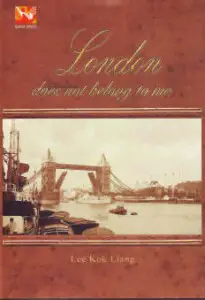 Genre: short story
Genre: short story
Setting: Southeast Asia (maybe Malaysia)
Meaning of title: expresses the incapacity of finding out the truth
Point of view: third-person omniscient
Characters:
– Aiya, the main character, a vagrant, whose name is mentioned only twice
– Kee Huat, Aiya’s school lost friend
– Gaik Lang, at first Kee Huat’s secret girlfriend, murdered in a moment of insanity by Aiya
– Aiya’s father, who will marry Gaik Lang
– Gaik Lang’s mother, a prostitute
Overview: This short story is the tragedy lived by a boy who was neglected by his own father. It also raises the question of women’s right in Southeast Asian countries, where the woman is / was seen as an object, and not as a human being.
Synopsis:
The short story begins with the description of a poor slum where the main character, whose name will be mentioned only later on, looks for lodging. The reader finds out that he is quite young and that he fled from home. The vagrant finds an abandoned house where he makes his accommodations out of cardboard. The same shattered house is shared by another sick old woman to whom he will engage in intercourse, although he never sees her face.
The reader doesn’t sympathize with the man character because “He had never worked before” and “Work seemed to him to be so far away and meaningless.” (p.40) He lives at the mercy of his grandmother who brings him every once in a while food and other necessities. But she doesn’t know that when he has no food, steals. Because he cares for his grandmother, he lets her believe that “he lived by begging.” (p.43) Another hint that the main character is a bad person is the scene where he refuses to help a child who was being bullied by other children, “and as he strode away he heard the thumps of fists on the little boy and the shrill howls of the boy.” (p.44).
One evening, when he was out stealing in an Amusement Park, he meets his long lost friend Kee Huat, who has gone dumb. They spend the night in a coconut plantation where the homeless used to live. After Kee Huat falls asleep, Aiya finds in his friend’s bundle a “thin pack of letters” (p.54), a diary and a photograph. He secretly starts to read them. The letters and the diary entries are flashbacks into the past.
Through these flashbacks we find out that, in their childhood, Aiya and Kee Huat were friends, studied at the same school and studied together. Kee Huat had a secret affair with Gaik Lang, the daughter of a prostitute. Aiya didn’t like her at all and once he even called her names. The letters and the time worn pages of the diary reveal the sad love story of the two youngsters. Gaik Lang remains pregnant after making love with Kee Huat just one time. This makes Kee Huat to wonder if his girlfriend is not a prostitute herself, like her mother. The reader never really finds out!
Then, the focus moves on to the relationship between Aiya and his father – “his mother died when he was small” (p.87). The father seems very interested in Gaik Lang, and immediately after he finds out that Kee Huat is dating her, he brings the girl into their own house and forbids his son to see Kee Huat. Soon after that Kee Huat disappears / moves and nobody wants / can tell Aiya where he is.
Aiya never had a good relationship with his father, but the situation worsens when the girl comes to live with them, and the boy is totally being ignored by his own father. Right before Aiya’s father and Gaik Lang’s wedding party Aiya murders the girl with a gardening knife. The judge decides: “Guilty but insane. And to be released immediately as the accused is now sane again.” (p.109) Soon after the trial, Aiya leaves his home in search for his friend Kee Huat, while his father leaves on a trip.
The last chapter brings the reader back to the coconut plantation where the two friends have been resting. They leave the shelter and on their out they see a saw-mill where once Aiya’s father wanted to find work for his son. Kee Huat starts acting strangely and sets the mill on fire. The reader is made to believe, although the writer never states it, that this is the place where Kee Huat was kept prisoner and probably mutilated.
The two friends leave together with hopes of great adventures. “The bundle containing the exercise book [diary] swung from his [Kee Huat] hand in a great arc and vanished into the drain with a plop.” (p.112) These last lines make us understand that both of them are ready for a new start, for a new life, maybe a better one, in which the past is forgotten.
Publication details: The mutes in the sun, and other stories by Lee Kok Liang. Federal Publication, Singapore, 1991, 159 p.

